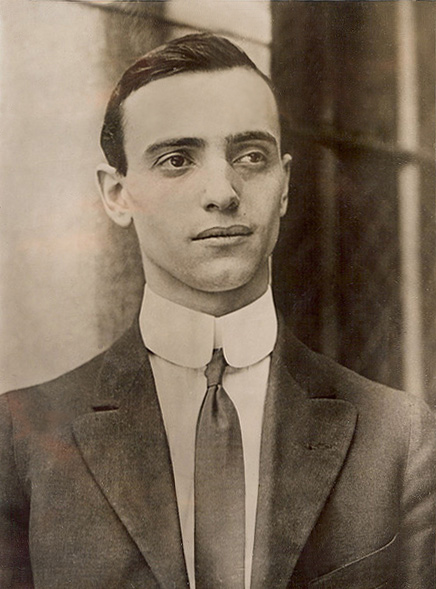
Pratt Institute Monthly mentions Leo Frank on the Debate team in June 1902 and mentions Leo Frank’s Brooklyn address as an Alumni in February, 1903. https://www.leofrank.org/library/pratt-institute/pratt-institute-monthly-1902.pdf. Google map is available.
1906
Steve Oney (Dead Shall Rise, 2003) claims, as do other Jewish-American authors that Leo Frank was 5’6″ and 130lbs., but reliable primary sources state otherwise. Leo Frank’s 1906 Senior Class Book at Cornell University registers him at 5’8″ and 145lbs (page 344 and 345). He would likely gain 10 to 15 lbs beyond his college years, which is the normal tendency commonly known for people entering the work force, especially after marriage is added to the equation. Leo Frank’s U.S. passport (1907-8) registers his height at 5’8″, sustaining the demographic information listed for him in his senior class book (Cornell, 1906). Concerning Leo Frank’s weight, guess what’s more reliable, Steve Oney’s claims or the Cornell Senior Class Book (1906) on page 345 that gives the more likely correct information. Concerning Leo Frank’s height, guess what’s more reliable and accurate, Leo Frank’s 1908 U.S. passport (National Archive Records, Ancestry.com) or Steve Oney (2003) and Albert Lindemann (1991) mistaking line 178 for 177 in the Cornell Senior Year Book (1906) on page 345? (Leo Frank Alma Mater, 1902 – 1906)
1907 / 1908.
Leo Frank’s official U.S. government passport registers him at 5’8″: https://www.leofrank.org/images/passport-leo-frank/leo-max-frank-passport-application.jpg and based on his lean muscle build, he was likely around 155 lbs to 160lbs in 1913 based on his 1906 college weight of 145lbs. The fact most people at the height of 5’8″ gain 10 to 15lbs, about 5 to 10 years after college and marriage is not inconceivable in the early 20th century. Compare 29-year-old Leo Frank’s physical size in 1913, to 13-year-old Mary Anne Phagan who was 4’11” tall, she was considered heavy for her height and age at about 107lbs. If this demographic information is indeed correct, Leo Frank was about 9″ inches taller than Mary Phagan.
Subtle Prejudicing of the Reader:
Most Leo Frank partisan revisionists intentionally lower Leo Frank’s height and weight, even though they have access to reliable primary sources about his demographic information to prejudice their readers. The artificial physical downsizing of Leo Frank is done in an effort to make him seem smaller than he was in real life, with the intention of making it seem less likely he could have attacked and over powered Mary Phagan. This kind of milquetoast effect is achieved by overstating Jim Conley to be a thick, stocky and muscular brute, but in real life Jim Conley was not body builder like as numerous images of him show and he was actually 2 inches shorter than Leo Frank. This body morphology manipulation is known as the ‘Leo Frank Girlyman Hoax’ and it’s perpetuated by a number of Leo Frank partisans (Frankites) and Jewish-American authors, despite the reliable primary sources publicly available to them.
1910:
Wednesday, November 30, 1910, Leo Frank Marries Lucille Selig Frank at Mr. Emil Selig’s rented home: No. 68 East Georgia Avenue, Atlanta, GA.
Atlanta Journal, Thursday, December 1, 1910, Wedding Announcements, Society Pages: https://www.leofrank.org/library/wedding-announcement/wedding-announcement-society-pages-atlanta-journal-thursday-december-1-1910.pdf
1913:
April 17, 1913, Leo Frank celebrates his 29th birthday.
Monday, April 21, 1913, Mary Phagan, Monteen Stover and several other girls are temporarily laid off until new brass sheet supplies can be restocked in the metal room.
April 25, 1913, Friday
1. On Friday, April 25, 1913, Leo Frank told his Negro nightwatchman Newt Lee to come to work the next day – Saturday, April 26, 1913 – one hour earlier at 4:00 PM instead of the normal Saturday check-in time of 5:00 PM. Leo Frank wanted to end his workday early, because of the Georgia State holiday of Confederate Memorial Day and Frank specifically told Lee that he wanted to go to the baseball game in the early afternoon with his brother-in-law Mr. Ursenbach, who was married to one of Lucille’s older sisters Roseline. What time was 30 minutes to 1 hour before the ball game started?
2. At 6:30pm Miss Ferguson (a friend of Mary Phagan) and co-worker at the factory came in to collect her weekly pay in the evening of Friday, April 25, 1913. Mary Phagan asked if Ms. Ferguson could also get her pay envelope as well, but Leo Frank said according to Ferguson, “No, Mary has to come get it herself”. Leo Frank’s response to Ferguson was odd, because it was a normal corporate policy to allow friends, family and pre-arranged people to pick up the pay for other people. What made matters worse, is that Leo Frank would admit to having given pay envelopes on behalf of other people to friends, family and associates as a normal procedure. Why did Leo Frank maneuver to have Mary Phagan meet him alone? Could Miss Ferguson have been covering for Mary Anne Phagan? If this is the case, did Mary Phagan have a pre-arranged tryst with Leo Frank? This is a variation in the time web that neither the defense or prosecution dared to publicly consider.
The Negro Watch Dog
3. On Friday April 25, 1913, Leo Frank told Jim Conley after paying him his weekly salary of sometimes $6.75 or sometimes $6 and change (55 hours x 11 cents), to come to the factory at 8:30 AM Saturday Morning so James “Jim” Conley could “watch” for Leo Frank, like he normally did on other Saturdays, and it was understood there would likely be a decent tip involved. For Jim Conley it was nice extra pocket change, considering a typical Atlanta divebar sold pints of beer at 3 to 5 cents in 1913.
April 26, 1913, Saturday, Confederate Memorial Day
On Confederate Memorial Day, Atlanta, Georgia at 12:01 PM, Mary Phagan arrived at the pencil factory, walked up the stairs and went into Leo Frank’s 2nd floor office to collect her pay envelope, she had been temporarily laid off and due $1.20 for her shortened week.
The 55 hour labor work week was recorded in a Thursday to Thursday cycle, payoff time was Saturday, noon sharp. However there were exceptions, because of the Georgia State Memorial Day that turned into a holiday weekend began on Saturday, signs were posted throughout the factory the week before, letting people know they would be paid on Friday instead. Saturday at highoon, was the standard day and time for payment, employees or ex-employees that missed this precise time were required to come back next week for their pay as a corporate policy and this is what happened to Monteen Stover that became the lynch pin for the case. Something unusual happened at the NPCo that resulted in Monteen Stover to coming back to the National Pencil Company, Saturday, May 3rd, 1913 with her step mother to pick up her pay envelope. The amount? $1.20 as well.
Because of the Phagan murder, Monteen Stover made the decision to no longer be an employee, but when she came back for her final payenvelope on May 3rd, 1913, she was discovered by police. The police were even more certain Leo Frank was guilty after Monteen Stover told them what happened, and when they approached Leo Frank and asked him if he was present in his office from noon to 12:45 and then again restating the time as noon to 12:35, Leo Frank swore he never left his office. The inconsistency was that Monteen Stover said Leo Frank’s office was completely empty between the complete 5 minutes of 12:05 to 12:10 PM on that gray drizzly day.
Mary Phagan had be laid off on Monday, April 21, 1913, because the supply of brass sheet metal had run out and it was normally stored under the stairs on the eastern most wall of the metal room. Mary’s normal salary of about $4.05 was for a 55 hour week at 7 and 4/11 cents an hour, but would only be $1.20 (16 hours), because of the reduction of her work week hours when the brass sheet metal had run out. Her odd 16 hours included a full day, Friday, April 18, 1913, a half day Saturday, April 19, 1913 and one hour on Monday, April 21, 1913. Mary and three other girls were laid off until the metal shipment was to be delivered sometime the following week, but when were they due? This was a temporary lay off right? or was it a long term or even final layoff?
When did Leo Frank see Mary Phagan?
Leo Frank was the Last Person to Admit Seeing Her Alive at 12:03 pm (Sunday, April 27, 1913), 12:05 to 12:10 pm (Monday, April 28, 1913), 12:10pm (Coroner’s Inquest, May 1913), 12:12 to 12:17 pm (August 18, 1913), 12:05 to 12:10 pm (Atlanta Constitution, March 9, 1914).
Leo Frank would be the last person to admit seeing Mary Phagan alive under some very unusual circumstances.
Can We Travel Down the Time Web, Back in Time?
Variation One: Did Leo Frank coax Mary into the metal room with a let’s see if the metal had come?
Variation Two: Did Leo and Mary have a pre-planned rendezvous in the metal room that took a wrong turn?
Variation Three: Did Mary Phagan have to make Water? See Defendant’s Exhibit 61 and State’s Exhibit A.
Variation Four: She Went Downstairs and was assaulted in the lobby of the first floor.
What really happened in the Metal Room from 12:02 PM to 12:19 PM, or 12:03 to 12:45 pm on Confederate Memorial Day, Saturday, April 26, 1913 at Noon and what led up to it?
What caused the flash of anger?
When Leo Frank left the NPCo to his in laws home at 68 East Georgia Avenue for lunch at 1:00 pm (Leo Frank Trial Statement), or 1:10 pm (Leo Frank Police Deposition, Monday, April 28, 1913) or 1:20pm (Minola McKnight Affidavit, June 3, 1913, stated Frank got home at 1:30, the trip from the office to home was 8 minutes), can we presume he likely would not have gone back to the factory afterwards, instead preparing to get ready and go see the baseball game with Mr. Ursenbach his brother in law? By phone Leo Frank called off the ballgame date with Mr. Ursenbach when he arrived at his residence on Saturday, April 26, 1913.
April 27, 1913, Sunday
3:17 to 3:19 AM, Newt Lee, after using the Negro toilet discovers Mary Phagan dead and slumped in front of the cellar furnace, located in the rear of the basement.
3:23AM, Newt Lee, reaches the wall phone in Leo Frank’s office (located between 2 windows), calls the police, and reaches Atlanta Call Officer W.F. Anderson at 3:24 AM. Britt Craig the young journalist is there waiting.
3:45 AM, Police arrive at 37 to 41 South Forsyth Street, Atlanta, GA and meet Newt Lee in the palladium front doorway of the factory, they watched his smoky lantern descend from the inky black staircase.
Newt Lee led the flash light and lantern wielding police down the scuttle hole to the scene of the crime, deep in the bowels of the National Pencil Company.
April 28, 1913
Coroners Inquest Jury, Wednesday, April 30, 1913
see: Newspaper pages.
See: Steve Oney’s book, ‘And The Dead Shall Rise. The Murder of Mary Phagan and the Lynching of Leo Frank’ for the Leo Frank partisan interpretation and abridged version of the Coroners Inquest Jury and for the neutral perspective on the Coroners Inquest Jury, read the day by day reporting from the local Newspapers of 1913.
Grand Jury, May 1913
Sealed: When will they let this one out to the public if it even still exists.
Leo Frank True Bill of Indictment
Leo Frank Trial July 28 1913 to August 26 1913
Primary Sources on the Leo Frank Case
Certified Official Legal Documents
See: State’s Exhibit A
* Leo M. Frank, Plaintiff in Error, vs. State of Georgia, Defendant in Error. In Error from Fulton Superior Court at the July Term 1913. Brief of Evidence. Only one original copy exists and it is located at the Georgia State Archive and numerous microfilm copies of this elusive document were made. These rare documents went online in 2010 for the public after 97 years of elusiveness. Ratified by both the Prosecution and Defense teams it captures the July 28th 1913 to August 25th 1913 witness testimony and evidence presented by both the prosecution and defense in the Leo M. Frank trial for the murder of little Mary Phagan on April 26th 1913.
Study the testimony of Leo Frank and Monteen Stover to see if you can figure out the #3 Leo Frank admission amounting to a confession after studying State’s Exhibit A and B.
REQUIRED READING (Two Volumes 1 and 2) Link: Georgia Supreme Court File: Contained within is the Brief of Evidence, Leo M. Frank, Plaintiff in Error, vs. State of Georgia, Defendant in Error. In Error from Fulton Superior Court at the July Term 1913. Read all 1,800 pages of the GA Supreme Court Case file.
August 21, 22, 23, 25, 1913: Closing Arguments at the Leo Frank Trial (Captured in American State Trials Volume X 1918) another Required Reading!
8-21-1913 to 8-25-1913 Closing Arguments in the Leo M. Frank Trial for the Murder of Mary Phagan, By Leo Frank Defense and State’s Prosecution: Required Reading.
Two Lawyers from Each Legal Team Give Closing Arguments at the End of the Leo Frank Trial
See (click): Luther Zeigler Rosser, Hugh M. Dorsey (PDF closing arguments), Frank Arthur Hooper and Reuben Rose Arnold.
Reuben Arnold: August and October
Reuben Rose Arnold: There were two major speeches Reuben Rose Arnold made on behalf of Leo Frank, one was made as a closing argument at the end of the Leo Frank trial in August 1913 (Lawson, 1918), and the second was made in Oct of 1913 (Arnold, 1913). These two speeches are often confused, read them both to see the comparisons.
Frank Arthur Hooper: The Closing Arguments of Mr. Frank Arthur Hooper for the prosecution of Leo Frank. (Lawson’s American State Trials Volume X, 1918).
Luther Zeigler Rosser: The Closing Arguments of Mr. Luther Zeigler Rosser for the defense of Leo Frank (Lawson’s American State Trials Volume X, 1918).
Hugh M. Dorsey: Arguments of Hugh M. Dorsey, closing statements in the Leo M. Frank Murder Trial in PDF (Very Rare, Must Read): Arguments of Hugh M. Dorsey in the Leo M. Frank Murder Trial (PDF) also on archive.org a review of the Argument of Hugh M. Dorsey (Archive.org Review and PDF)
Reuben Arnold: October 1913, Published in 1915
The Trial of Leo Frank, Reuben R. Arnold’s Address to the Court on his Behalf was made in October 1913 after the murder trial, at a hearing to get the verdict set aside and a new trial issued. Introduction by Alvin V. Sellers. Classic Publishing Co., Baxley GA. Copyright, 1915 by Alvin V. Sellers and The Trow Press, New York. Booklet format, 69 pages and published in 1915. Original booklets are extremely rare and difficult to find in superior condition. Available in Adobe PDF Format, Download: Arguments of Ruben R. Arnold.
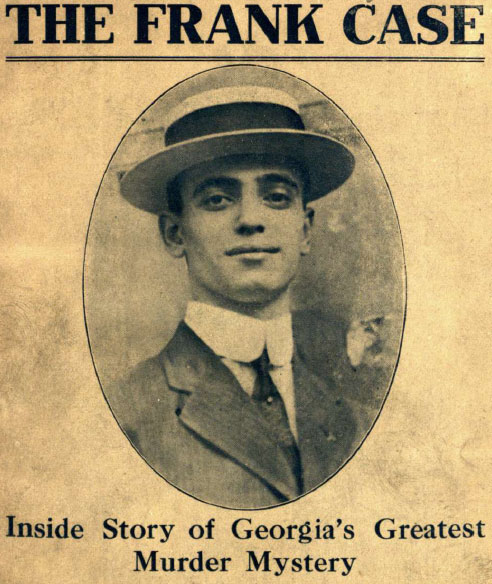
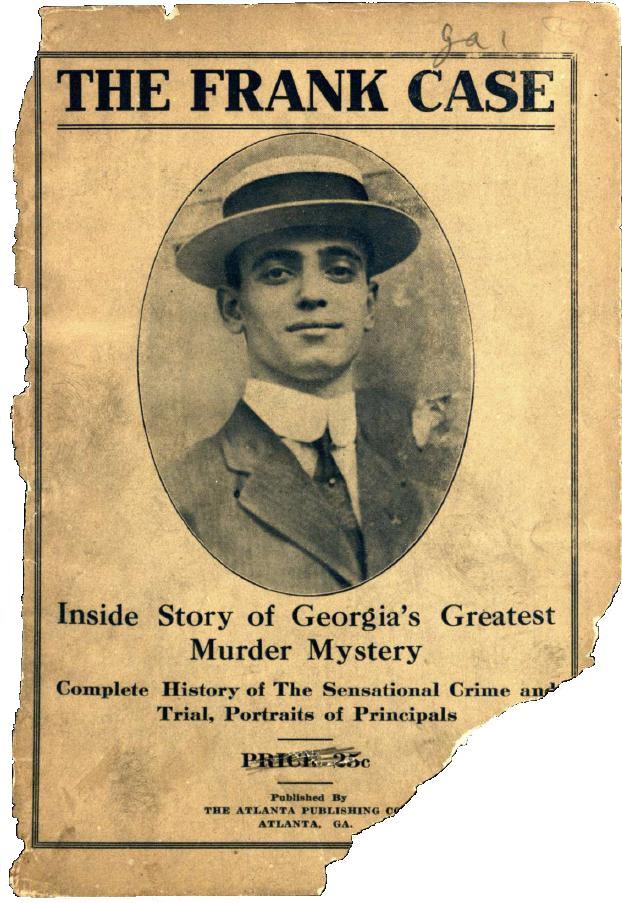
1914
Leo Frank’s 4th Separate and Distinct Admission amounting to a Murder Confession (make sure you are deeply acquainted with Leo Frank murder confession #3 before you can understand Leo Frank murder confession #4), See: Atlanta Constitution, March 9, 1914: Leo Frank Answers List of Questions Bearing on Points Made Against Him. Can you figure out how the other 3 Leo Frank murder confessions developed?
* The Jeffersonian. 17 December 1914. “Leo Frank Sentenced Again” Magazine article. Teaser. Can be Accessed, The Tom E. Watson Digital Papers Archive (recommended) at the University of North Carolina at Chapel Hill: http://www2.lib.unc.edu/dc/watson/
The Jeffersonian Newspaper, 1914 about Leo Frank, https://www.leofrank.org/images/jeffersonian-newspaper-images/1914/, can be accessed, The Tom E. Watson Digital Papers Archive (recommended) at the University of North Carolina at Chapel Hill: http://www2.lib.unc.edu/dc/watson/ (see 1914 to 1917)
Five arguments in the Frank case by Berry Benson (1914): https://www.leofrank.org/library/five-arguments-in-the-frank-case-berry-benson.pdf Pay very close attention to the police dictated version of the notes as they overthrow the 1914 and 1915 Attorney Henry Alexander “night witch” hoax. See if you can uncover that riddle by reverse engineering it. What did Jim Conley write down when the police said to write down Night watchman in proper English, how did Conley write it down in Ebonics?
* “The Frank Case.” Collier’s: The National Weekly. 19 & 26 December 1914. Grossly biased in Frank’s behavior. See the photos in this article. Vol. 54, No. 14 (19 December 1914) and No. 15 (26 December 1914)
1915
Jeffersonian Publishing Company, Watson’s Magazine (Published from 1907 to 1917, Editor Tom Watson). Read Watson’s Magazine, Jan, March, August, September and October 1915 issues. The best issues on the Leo Frank case are August and September 1915.
* The Jeffersonian Newspaper. 25 March 1915. “The Leo Frank Case Still Raging in Northern Papers” Magazine article. Can be Accessed, The Tom E. Watson Digital Papers Archive (recommended) at the University of North Carolina at Chapel Hill: http://www2.lib.unc.edu/dc/watson/
* Watson’s Magazine, January 1915, Volume 20 No. 3. See page 139 for the Leo Frank Case. Jeffersonian Publishing Company, Thomson, Ga. Available online in adobe PDF format for download from www.archive.org.
* The Full Review of the Leo Frank Case By Tom Watson (March 1915) Volume 20. No. 5. See page 235 for ‘A Full Review of the Leo Frank Case’. Jeffersonian Publishing Company, Thomson, Ga. Available online in adobe PDF format for download from www.archive.org.
* Watson’s Magazine August 1915 volume 21 no. 4 featuring Leo Frank Mary Phagan Murder Trial A review of the Leo Frank trial by Tom Watson. Available online in adobe PDF format for download from www.archive.org.
* The Official Record in the Case of Leo Frank, Jew Pervert, September 1915 By Tom Watson, of historical importance. Available online in adobe PDF format for download from www.archive.org.
* Rich Jews Indict the State of Georgia (October, 1915) By Tom Watson, historically important. Tom Watson exposes the big money Jewish Community. Available online in adobe PDF format for download from www.archive.org.
The Jeffersonian Newspaper, 1915 about Leo Frank: https://www.leofrank.org/images/jeffersonian-newspaper-images/1915/
CP Connolly, The Truth About the Leo Frank Case (copyright 1915): https://www.leofrank.org/the-truth-about-the-leo-frank-case/
1916
The Jeffersonian Newspaper, 1916 about Leo Frank, https://www.leofrank.org/images/jeffersonian-newspaper-images/1916/, can be accessed, The Tom E. Watson Digital Papers Archive (recommended) at the University of North Carolina at Chapel Hill: http://www2.lib.unc.edu/dc/watson/
1917
The Jeffersonian Newspaper, 1917 about Leo Frank, https://www.leofrank.org/images/jeffersonian-newspaper-images/1917/, can be accessed, The Tom E. Watson Digital Papers Archive (recommended) at the University of North Carolina at Chapel Hill: http://www2.lib.unc.edu/dc/watson/
1918
* Lawson, John Davison (ed.). American State Trials Volume X (1918) contains the abridged trial testimony starting on p. 182. This document also contains the rare and ellusive closing arguments of the Leo M. Frank defense team and prosecution team. *Required Reading.
A 1918 Primary Source emerged about the Leo M. Frank case produced by John Davison Lawson LLD, it provides an extensively abridged version of the Official Record in the 1913 Leo M. Frank trial. It is worth reading and comparing American State Trials 1918, Volume X directly with the testimony provided within the unabridged 1913 Official Record / Brief of Evidence. You can see what Lawson left out in terms of evidence and testimony, which is very interesting. Be sure to read the closing arguments of Luther Rosser, Reuben Arnold, Mr. Frank Hooper and Hugh M. Dorsey it is the only source I could find with them.
Compare American State Trials Volume X with the Official Brief of Evidence in the 1913 Leo M. Frank trial, both are available here on www.LeoFrank.org and www.Archive.org.
A journal of major U.S. court cases, this one included much about Leo Frank. Available for download in Adobe PDF format: American State Trials 1918, Volume X.
The Internet Archive version of Leo M. Frank, Plaintiff in Error, vs. State of Georgia, Defendant in Error. In Error from Fulton Superior Court at the July Term 1913. Brief of Evidence 1913
Conviction
See: The Brief of Evidence
Sentencing
See: The Brief of Evidence
Motion for a New Trial
31 October 1913 – Judge Roan denied the motion for a new trial
Appeals
17 February 1914 – the Supreme Court of Georgia affirmed the verdict of the lower court by a vote of 4 to 2.
25 February – the Supreme Court of Georgia, unanimously overruled a motion for rehearing.
7 March 1914 – Frank was sentenced by Judge Leonard S. Roan, for the second time to death by hanging on April 17th, Leo M. Frank’s birthday.
16 April 1914 – at the eleventh hour, an extraordinary motion for a new trial was filed and the death sentence prescribed by Judge Leonard S Roan on Leo M. Frank’s 30th birthday again stayed.
22 April 1914 – Judge B. H Hill, former chief justice of the Court of Appeals, who had succeeded to the Judgeship of Fulton Superior Court, denied the extraordinary motion for a new trial.
25 April 1914 – The day before the anniversary of Mary Phagan’s death, Frank’s sanity was examined and he was declared sane.
14 November 1914 – the Georgia Supreme Court again denied a new trial.
18 November 1914, the Georgia Supreme Court refused a writ of error.
23 November 1914 – Mr. Justice Lamar, of the Supreme Court of the United States refused a writ of error.
25 November 1914 – Mr. Justice Holmes of the United States Supreme Court, also refused a writ.
7 December 1914, the full bench of the United States Supreme Court refused a writ of error.
9 December 1914, Frank was re-sentenced to death to hang on January 22, 1915.
21 December 1914 – United States District Judge W. T. Newman of Georgia, refused a writ of habeas Corpus.
28 December 1914 – Mr. Justice Lamar granted an appeal and certificate of reasonable doubt to the United States Supreme Court.
15 April 1915 – the Supreme Court of the United States, with Mr. Justices Holmes and Hughes dissenting, dismissed the appeal.
Court Appeals Exhausted – Prison Board and Governor Left
31 May 1915 – Frank’s plea for commutation of sentence to life imprisonment was heard before the State Prison Commission.
June 1915
9 June 1915 – the State Prison Commission submitted a divided report to Governor Slaton, Commissioners Davison and Rainey voting against and Commissioner Paterson for commutation.
Commutation
Georgia Governor John M. Slaton, the senior law partner of the Leo M. Frank legal defense team chooses to commute his clients death sentence to life in prison on June 21st 1915 at the eleventh hour, as Leo M. Frank was sentenced to Hang on June 22nd 1915. Leo M. Frank Clemency Decision by John M. Slaton June 21st 1915.
21 June 1915 – Governor John M. Slaton commuted his client Leo M. Frank’s death sentence to life in prison. The people were outraged, because in his commutation order, Slaton said he was sustaining the Judge, Jury and Appellate courts verdict.
Prison Shanking
17 July 1915 – Frank was attacked by a fellow convict who cut his throat with a butcher knife. He lingered between life and death for several weeks, but finally recovered.
Lynching
17 August 1915 – Frank was lynched from a mature oak tree.
Interesting Primary and Secondary Sources, including Fiction and Related Reading:
1918:
American State Trials 1918, Volume X. Provides an extremely abridged version of the trial testimony and tends to side with Leo Frank in the introduction. One of the best reads on the subject. It contains the closing arguments of the 2 main prosecutors and 2 main defense lawyers. Be sure to read the closing arguments and the aftermath of the trial. Be sure to read: American State Trials 1918, Volume X.
1925:
Mystery of the Pencil Factory, by Sidney Sutherland from Ten real murder mysteries–never solved! New York : London G.P. Putnam’s Sons. Published in 1929 by the Knickerbocker Press. numerous errors but an interesting early account.
1935
Murder in Harlem (1913) A black night watchman at a chemical factory finds the body of a murdered white woman. After he reports it, he finds himself accused of the murder. A mystery and drama based loosely on the Leo Frank case, 102 minutes.
1936
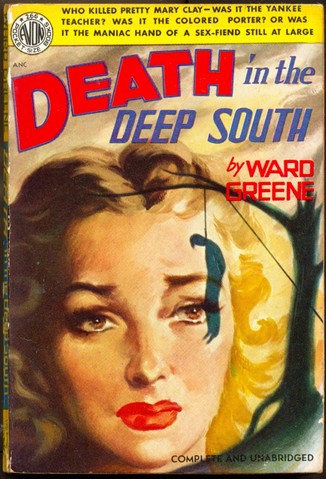
1937
They Won’t Forget (1937) Mervyn LeRoy, Ward Greene (novel “Death In the Deep South”), Robert Rossen (screenplay) and Aben Kandel (screenplay) : Based on the Novel Death in the Deep South
http://www.archive.org/download/TheyWontForget/ (for some odd reason deleted or offline)
* They Won’t Forget (1937) A pretty schoolgirl is murdered. An ambitious prosecutor wants publicity. And an outsider – a Northern teacher in a sleepy Southern town – makes a handy defendant, someone the locals will happily convict, innocent or guilty. Based on the infamous Leo Frank case, They Won’t Forget is an explosive, acclaimed indictment of bigotry that’s rich in deceptive motives, sudden violence and courtroom suspense. The talent is as powerful as the story: Mervyn LeRoy (I Am a Fugitive from a Chain Gang) produced and directed with steady hand and crackling pacing, Robert Rossen (The Hustler) co-wrote the unflinching script, Claude Rains (Casablanca) etches a portrait of the ruthless prosecutor with poison and guile, and in her first credited role, Lana Turner makes the schoolgirl beguiling prey for an unhinged mind.
http://www.imdb.com/title/tt0029658/
1937
Rascoe, Burton. 1937. Before I Forget. Literary Guild. (biased toward defense)
1938:
The Biography of Tom Watson: Agrarian Rebel. http://www.archive.org/details/AgrarianRebel1938BiographyOfTomWatson Available for download on Archive.org
1947
Rascoe, Burton, The Case of Leo Frank: A Factual Review of One of the Most Sensational Murder Cases in Court Annals, Girard, KS, Haldemann-Julius, 1947: http://www.archive.org/details/TheCaseOfLeoFrank
1952:
Busch, Francis X. 1952. Guilty or Not Guilty. Bobbs-Merrill. Worth reading, despite its errors. It takes the side of the Prosecution during the body of the work, but plays neutral at the end, which adds a nice twist to the book.
1954
* Garrett, Franklin M., Atlanta and Environs: A Chronicle of Its People and Events. Volume II, Athens, GA. University of Georgia Press, 1954, pp. 619-628
1956
Samuels, Charles and Louise. Night Fell on Georgia New York, Dell Publishing Co., 1956. @ archive.org The Internet Archive.
Book Download: https://www.leofrank.org/library/night-fell-on-georgia-charles-louise-samuels.pdf. Perhaps one of the most interesting versions of the case that sides with Leo Frank. Jewish husband and wife authors.
Charles Samuels: http://en.wikipedia.org/wiki/Charles_Samuels
1960’s:
The 7-volume Leo M. Frank trial transcript was stolen in the early 1960’s.
1961
THE THUNDERBOLT, February, 1961, Issue #26, Dr. Edward Fields, The Leo Frank Case: https://www.leofrank.org/library/edward-fields/leo-frank-case-dr-edward-fields.pdf
1964
* The 1964 television series “Profiles in Courage” dramatized Governor John M. Slaton’s decision to commute Frank’s sentence, The episode starred Walter Matthau as Governor Slaton and Michael Constantine as Tom Watson.
Pierre van Paassen A Leo Frank Hoax is Born that would get regurgitated by pseudo-historians and pseudo-scholars who write about the Leo Frank case.
Memories of 1922: The Origin of the Leo M. Frank Teeth X-Ray Photos and Mary Phagan Bite Mark Hoax:
To Number Our Days, Published in 1964 By Dutch Jew and Self-Proclaimed Zionist Pierre van Paassen. Library of Congress Catalog Card Number 64-13633. 404 Pages.
Short Stand in Dixieland Page 237
Line 27: “The Jewish community of Atlanta at that time seemed to live under a cloud. Several years previously one of its members, Leo Frank, had been lynched as he was being transferred from the Fulton Tower Prison in Atlanta to Milledgeville for trial on a charge of having raped and murdered a little girl in his warehouse which stood right opposite the Constitution building. Many Jewish citizens who recalled the lynching were unanimous in assuring me that Frank was innocent of the crime.
I took reading all the evidence pro and con in the record department at the courthouse. Before long I came upon an envelope containing a sheaf of papers and a number of X-ray photographs showing teeth indentures. The murdered girl had been bitten on the left shoulder and neck before being strangled. But the X-ray photos of the teeth marks on her
To Number Our Days, Page 238
body did not correspond with Leo Frank’s set of teeth of which several photos were included. If those photos had been published at the time of the murder, as they should have been, the lynching would probably not have taken place.
Though, as I said, the man died several years before, it was too late, I thought, to rehabilitate his memory and perhaps restore the good name of his family. I showed Clark Howell the evidence establishing Frank’s innocence and asked permission to run a series of articles dealing with the case and especially with the evidence just uncovered. Mr. Howell immediately concurred, but the most prominent Jewish lawyer in the city, Mr. Harry Alexander, whom I consulted with a view to have him present the evidence to the grand jury, demurred. He said Frank had not even been tried. Hence no new trial could be requested. Moreover, the Jewish community in its entirety still felt nervous about the incident. If I wrote the articles old resentments might be stirred up and, who knows some of the unknown lynchers might recognize themselves as participants in my description of the lynching. It was better, Mr. Alexander thought, to leave sleeping lions alone. Some local rabbis were drawn into the discussion and they actually pleaded with Clark Howell to stop me from reviving interest in the Frank case as this was bound to have evil repercussions on the Jewish community.
That someone had blabbed out of school became quite evident when I received a printed warning saying: “Lay off the Frank case if you want to keep healthy.” The unsigned warning was reinforced one night, or rather, early one morning when I was driving home. A large automobile drove up alongside of me and forced me into the track of a fast-moving streetcar coming from the opposite direction. My car was demolished, but I escaped without a scratch…. ”
To Number Our Days, Published in 1964 By Dutch Jew and Self-Proclaimed Zionist Pierre van Paassen. Library of Congress Catalog Card Number 64-13633. 404 Pages.
1965
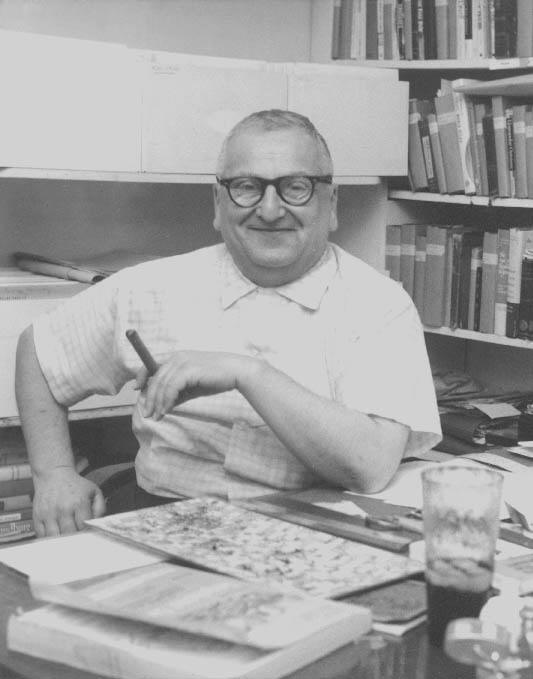
1966
* Golden, Harry (1966). The Lynching of Leo Frank. London: Cassell & Co. The Lynching of Leo Frank by Harry Golden, published 1966: http://www.archive.org/details/TheLynchingOfLeoFrankByHarryGolden1966. Appears to be the UK published version of A Little Girl is Dead.
PhD Dissertation: Leonard Dinnerstein
PhD dissertation on the Leo Frank Case by Leonard Dinnerstein at Columbia University for Political Science Department (1966). https://www.leofrank.org/library/dissertation-thesis/leonard-dinnerstein-dissertation-leo-frank-case-1966.pdf An academic diatribe revealing Leonard Dinnerstein another Jew pathologically obsessed with anti-Semitism to the extreme limit, that he is willing to distort the case.
Dinnerstein has spent about 50 years of his life studying the Leo Frank case through the lens of a man suffering from the pathology of persecution mania. If you suffer from Jewish victim-persecution syndrome and want to read the melodramatic version of Leo Frank that omits 99% of the evidence incriminating Leo Frank, read this dissertation by Leonard Dinnerstein.
1968
American Jewish Archive Journal (1968) Volume 20, Number 2: Leo M. Frank and the American Jewish Community by Leonard Dinnerstein. Source: http://americanjewisharchives.org/journal/
The Leo Frank case by Leonard Dinnerstein, first edition 1968, is an expanded version of his 1966 Columbia University dissertation on the subject. See: Leonard Dinnerstein is director of Judaic Studies at the University of Arizona (Retired).
Several later editions of the book exist, dated 1987, 1991, 1999, 2008 (did i miss any dates?), one version is called, ‘Notable Trials Library edition’, 1991. Regardless of how many times the book is re-written and published it is still regarded as filled with errors, unreliable and incomplete on the Leo Frank trial and appeals.
Dinnerstein does a good job of misrepresenting and spinning the facts, evidence and testimony of the case on behalf of Leo Frank, while selectively omitting all the relevant evidence against him. Leonard Dinnerstein invested 50 years of his Intellectual manipulation in the Leo Frank Case and still can’t get the story right. He doesn’t dare plumb the depths of this affair. Leonard Dinnerstein is another Jewish Spineless Coward who doesn’t dare swan dive into abyss of Leo Frank’s dark soul and tell the tale correctly. Leonard Dinnerstein’s book is in complete contradiction to the 1,800 page GA Supreme Court case file on Leo Frank (Required Reading) at www.archive.org the Internet Archive.
* Dinnerstein, Leonard, The Leo Frank Case (book version) written by pseudo-scholar, pseudo-historian and Jewish Left Wing University of Arizona Professor, Leonard Dinnerstein, who did his dissertation on the Leo Frank Case and who often distorts and exaggerates claims of Anti-Semitism in other books he has written about history. Originally published in New York, Columbia University Press, 1966, 1968. New edition published in Athens, GA: The University of Georgia Press, 1987. Purchase Dinnerstein’s book at Amazon.
* The Leo Frank Case by Leonard Dinnerstein available on Archive.org.
1973
“Atlanta in the Progressive Era: A Dreyfus Affair in Georgia”. Jews in the New South. Ed. Leonard Dinnerstein and Mary Dale Palsson. Baton Rouge: The Louisiana State University Press, 1973
1974
“Is the Jew a white man?”: press reaction to the Leo Frank case, 1913-1915 by Eugene Levy (1974)
1978
* Hertzberg, Steven (1978). Strangers Within the Gate City: The Jews of Atlanta, 1845-1915. Philadelphia: the Jewish Publication Society of America.
1982
‘Notes on the Case of Leo Max Frank and its Aftermath,’ by Tom Watson Brown, 1982.
1986: The Rehabilitation of Leo Frank
Source: http://www.instaurationonline.com/pdf-files/Instauration-1986-06-June-pt1.pdf. Instauration, June, 1986, is an addition to the Leo Frank library and archive. Instauration represents the right wing view on the Leo Frank pardon, which is an opinion shared by many people.
Georgia Pardon and Paroles issues Leo Frank posthumous pardon without exoneration. Controversy Explodes. Extra Extra Read All About it!
1987: The best book to date written on the Leo Frank Case.
Kean, Mary Phagan. “The Murder of Little Mary Phagan.” New Horizon Press, 1987, Download: The Murder of Little Mary Phagan By Mary Phagan-Kean, the Great Grand Niece of Mary Phagan. (Neutral Source for academic and scholarly research).
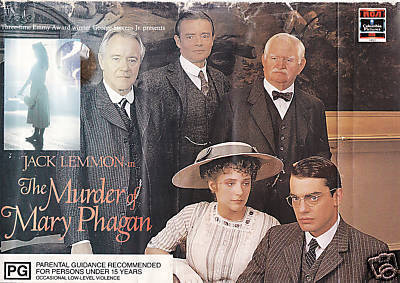
In the miniseries during the trial the windows are opened (total fabrication), and people start screaming Anti-Semitic words drowning out the court and then hundreds of people stand up and start singing loudly in court taking it over (this never happened in real life, and if it had the newspapers would have been all over it). This miniseries is just one more example of an uncountable number of Jewish made and disseminated disinformation and media propaganda campaigns against European-Americans, the United States of America and Western Civilization, like the Jewish created “People vs. Leo Frank” (2009) this movie also reaches the heights of Jewish insolence, spin, slander and lies, completely twisting the facts, evidence and testimony unforgivably. Study the Leo Frank case in great detail and then watch this miniseries which is the grotesque epiphany of Jews smearing human feces into the face of truth.
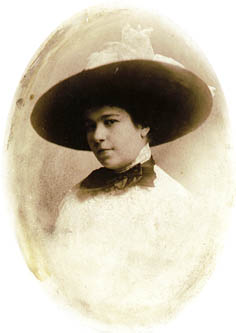 Mrs. Lucille Cohen Selig Frank
Mrs. Lucille Cohen Selig Frank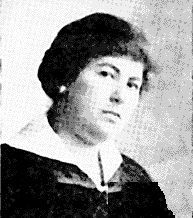


The chunky, androgynous, dumpy, and bulldykish looking Mrs. Leo Frank is often idealized in Jewish media representations as thin and beautiful, examples include “Thou Shalt Not Kill” (1915) silent film surviving photos; “The Murder of Mary Phagan” (1987) 4-hour miniseries; and “the People vs. Leo Frank” (2009), the fictionalized docudrama.
The Murder of Mary Phagan, a 1987 two-part TV miniseries made by Orion Pictures Corporation and distributed by National Broadcasting Company (NBC), is a dramatization of the story of Leo Frank, a factory manager charged and convicted with murdering a 13-year-old girl, a factory worker named Mary Phagan, in Atlanta, Georgia in 1913. The trial was sensational and controversial. After Frank’s legal appeals had failed, the governor of Georgia in 1915 commuted his death sentence to life imprisonment. In 1915 Frank was kidnapped from prison and lynched by a small group of prominent men of Marietta, Georgia. The film features Jack Lemmon, Kevin Spacey, Rebecca Miller, Charles Dutton, Peter Gallagher, Cynthia Nixon, Dylan Baker, and William H. Macy. Written by Larry McMurtry, produced by George Stevens, Jr., and directed by William “Billy” Hale, the film was shot in Richmond, Virginia. It has a running time of 251 minutes (over 4 hours), originally broadcast over two evenings. The film won the 1988 Emmy Award for Outstanding Miniseries.
Video: http://www.amazon.com
Also see Jewish Dominated Encyclopedia, Wikipedia: http://en.wikipedia.org/wiki/The_Murder_of_Mary_Phagan
1991:
A Marshall Cavendish Weekly Publication (1991). Murder Casebook, Investigations into the Ultimate Crime. The Atlanta Lynching (64). Leo Frank: The scapegoat for a crime that outraged the state of Georgia. By David Jessel, Colin Wilson, James Morton, and Bill Waddell. http://archive.org/details/TheLynchingOfLeoFrankMurderCaseBookMagazine1991
Baker, Liva. 1991. The Justice from Beacon Hill. HarperCollins. (source for the Leo Frank Defense)
Lindemann, Albert S. The Jew Accused: Three Anti-Semitic Affairs (Drevfus, Beilis, Frank), 1894-1915. New York: Cambridge University Press, 1991. (Of all the Jewish authors on the Leo Frank Case, he tends to be the most neutral, but also tends to lean toward the side of the defense).
MacLean, Nancy. “The Leo Frank Case Reconsidered: Gender and Sexual Politics in the Making of Reactionary Populism.” The Journal of American History Vol. 78, No. 3, December 1991, pp. 917–948.
1994:
Knappmann, Edward W., ed. 1994. American Trials of the 20th Century. Gale Research.
1996:
* Dinnerstein Leonard, “The Fate of Leo Frank”, and Goldfarb, Stephen J. “Framed.” American Heritage. October 1996, 108-113. (Evidence from the November 1915 trial of the Pinkerton Detective Agency v. National Pencil Company, for non-payment of bills, indicates that the agency actively worked against its client, Leo Frank, to have him found guilty of murder).
* Dinnerstein, Leonard. “The Fate of Leo Frank”, American Heritage, 47, October 1996, pp. 98–109. http://www.americanheritage.com/content/fate-leo-frank
Two Articles – The Fate of Leo Frank & Framed: https://www.leofrank.org/library/fate-of-leo-frank-leonard-dinnerstein.pdf
More on Leonard Dinnerstein: https://www.leofrank.org/leonard-dinnerstein/
1997:
* Mamet, David, The Old Religion (October 1997). Purchase a copy on Amazon.
http://archive.org/details/TheOldReligionByDavidMamet @ www.Archive.org The Internet Archive.
2000:
* MILESTONES IN HABEAS CORPUS—PART II, LEO FRANK LIVES: UNTANGLING THE HISTORICAL ROOTS OF MEANINGFUL FEDERAL HABEAS CORPUS
REVIEW OF STATE CONVICTIONS. Eric M. Freedman, Professor of Law. https://www.leofrank.org/library/eric-freedman-case-review.pdf
GoldFarb, J. publishes the Phagan-Kean list of “Leo Frank Lynchers” https://www.leofrank.org/library/leo-frank-lynchers.pdf, Emory University, Leo Frank Collection, Mary Phagan Kean’s list of vigilance committee’s members, Folder 16.
* For one dishonest perspective on the founding of the ADL, taken from the hysterical, neurotic, self-deceiving and ego obsessed Jewish Community, see Blakeslee, Spencer. The Death of American Antisemitism. Greenwood Publishing Group, 2000, 81.
2002:
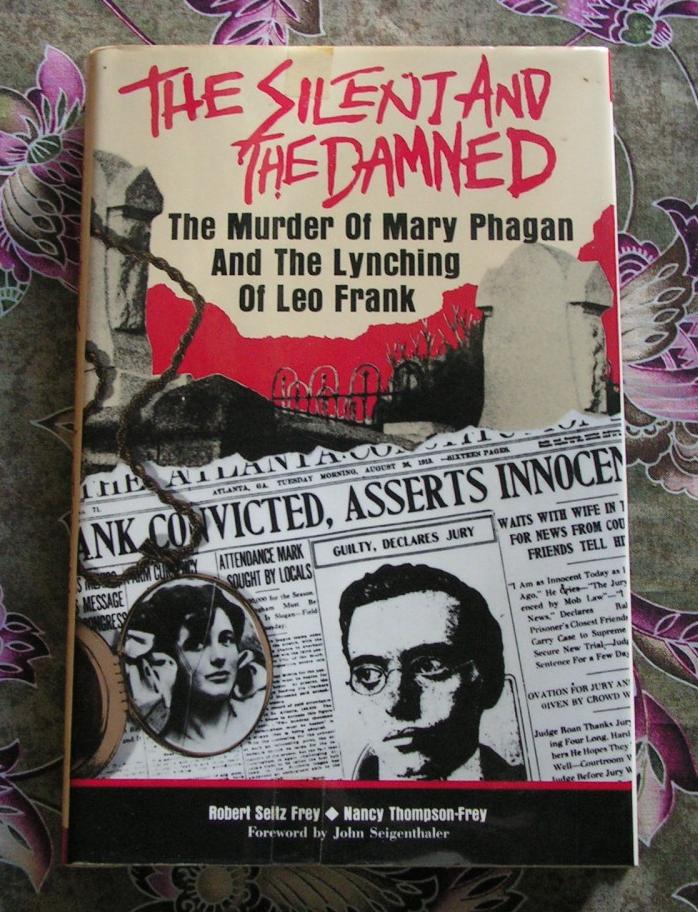
2003:
Book: Oney, Steve (2003) And the Dead Shall Rise: The Murder of Mary Phagan and the Lynching of Leo Frank published by Pantheon Books, New York, 742 pages.
Review: Review of Stephen Oney, And the Dead Shall Rise: The Murder of Mary Phagan and Lynching of Leo Frank
2004
* Wilkes, Donald E., Jr. “Politics, Prejudice, and Perjury“, University of Georgia School of Law; also see “Wrongly Accused, Falsely Convicted, Wantonly Murdered“, University of Georgia School of Law.
2009: The Jewish Culture War is Accelerating Before the Centennials of the Mary Phagan murder, Trial and hanging of Leo Frank.
CNN (Jewish Controlled News Network): http://www.cnn.com/2009/CRIME/11/02/leo.frank/
People V. Leo Frank Fictionalized Docudrama Review, about the spin, fabrication and omission of evidence against Leo Frank. This Jewish propaganda film is shamelessly biased on behalf of Leo Frank. The People v Leo Frank, review of the documentary, People v Leo Frank (2009), a Propaganda film about Leo Frank by Ben Loeterman and Steve Oney as Chief Consultant. http://www.leofrankfilm.com/. This “documentary” is for sale on Amazon.
* “The People versus Leo Frank” (2009), IMDb.com review, accessed August 23, 2010.
* Bernstein, Matthew (2009). Screening a Lynching: The Leo Frank Case on Film and Television. Athens, GA: University of Georgia Press.
2010: The Culture War is Peaking
* An Unspeakable Crime: The Prosecution and Persecution of Leo Frank By Elaine Marie Alphin.
Book Review: An Unspeakable Crime by Elaine Marie Alphin The most dishonest version of the Leo M. Frank case ever published to date and used to poison the minds of children and college students with pathological lies about the Leo Frank case. Elaine Marie Alphin is a nutball who is batshit crazy to the infinite power with this Jewish culture war poison book she is churning out by the thousands to the US population of young adults, teens, children and college students.
Steve Oney: Off the Shelf: Letting go of a life’s work (January 10, 2010) http://www.latimes.com/entertainment/news/arts/la-caw-off-the-shelf10-2010jan10,0,4242686.story Nearly 2 decades of research being released for the next generation of students wishing to explore this case.
Leo Frank Case and Trial Research Library goes online in 2010 to counter 100 years of Jewish propaganda and racist anti-White lies about the Leo Frank case, relentlessly pushed by the Jewish community, waging a cultural racewar, against Gentile Western Civilization.
2011:
October, 2011, Jewish Zman Magazine (http://www.zmanmagazine.com/), A Jew’s Lynching – The Leo Frank Saga by Shimon Rosenberg, Chaim Rivkin, and Rachel March. http://www.zmanmagazine.com/PDF/Leo%20Frank.pdf
2012:
Op-Ed: The murder of Mary Phagan — 99 years ago today:http://www.digitaljournal.com/article/323026
Leo Frank Library Celebrates 2 Years of Hardcore research and information gathering on the Leo Frank case. We hope by 2013 this is a formidable library of knowledge and resources on the Leo Frank case for academia. We hope to create several free online educational courses about this case in the future.
2013:
April 26, 2013, Centennial of the Mary Phagan Murder.
The American Mercury releases a ground breaking article: One Hundred Reasons Leo Frank is Guilty. Followed by a whole series of articles about the Leo Frank Case. Check back every month at the American mercury for superb journalism.
The Legal Significance of the Leo Frank Case, by Rodger Citron (Jewish Professor of Law at Touro Law Center)
http://verdict.justia.com/2013/09/16/the-legal-significance-of-the-leo-frank-case
September 24, 2013, Steve Oney, Atlanta Magazine, People v Leo Frank.
http://www.atlantamagazine.com/agenda/2013/09/24/people-v-leo-frank-steve-oney
2014:
Hollywood is slated to release the racist anti-Gentile Knights of Mary Phagan (November, 2014) with a $12 million dollar budget. Many are predicting as of Jan. 2014, it will exaggerate disruptions at he trial, won’t show all the evidence against Leo Frank and smear Southerners as hot headed booger-eating hillbillies. http://www.imdb.com/title/tt3109010/
2015:
August 17, 2015, Centennial of the Leo Frank hanging, the Jewish controlled media goes into a foaming at the mouth racist anti-Gentile frenzy about anti-Semitism and anti-Semites. They will hold several talks falsify the Leo Frank trial brief of evidence. Leo Frank will be rehabilitated from a serial pedophile and convicted child killer into a nice Jewish boy from Brooklyn.
++++++++++++++++++++++++++++++++++++++++++++++++++++++++++++++
+++++++ APPEALS at the State and Federal Courts ++++++++++++++++++
++++++++++++++++++++++++++++++++++++++++++++++++++++++++++++++
Court Appeals 1913 to 1915
* First Appeal, Oct 1913, Leo M. Frank Case
* Bill of Exceptions, November 15, 1913, Leo M. Case.
* Supreme Court of the United States of America, October Term, 1914. Leo M. Frank, Appellant vs. C. Wheeler Mangum, Sheriff of Fulton County, Georgia. Appeal from the District Court of the United States for the Northern District of Georgia. Available in PDF, size 25.5 megs and 552 Pages. The abridged Trial Testimony of Jim Conley with Questions and Answers starts at around page 50/552 and ends at around 110/552.
Clemency / Commutation, Spring and Summer of 1915
* Governor John M. Slaton’s Clemency Decision in the Leo M. Frank Case June 21st 1915. In a terrible act of treachery, the Georgian Governor John M. Slaton, a senior law partner in the legal firm representing Leo M. Frank, decides to commute Leo M. Frank’s death sentence to life in prison. Slaton, compares Leo M. Frank a pedophile-rapist and convicted strangler to the ManGod Jesus Christ.
* Leo Frank Clemency File, images of original documents related to the clemency petition, including abridged archive of Governor John M. Slaton’s notes (Georgia Virtual Vault) Click here.
Tom Watson Supporting the Prosecution 1915
Watson’s Magazine Published 1910 to 1917, Editor Tom Watson. Leo Frank covered in January, March, August, September* & October 1915. Best issues of Watson’s Magazine are August, September and October of 1915.
* Watson, Tom. Watson’s Magazine, Jeffersonian Publishing Company, September 1915, Volume 21, Number 5, The Official Record in the Case of Leo Frank, A Jew Pervert. Firebrand Tom Watson, solves the murder of Mary Phagan, by utilizing the official Georgia State record of trial testimony given by Leo Frank. The official record Tom Watson is referring to in the title of his text is the elusive legal ‘brief of evidence’, known in legal terminology as, ‘Leo M. Frank, Plaintiff in Error, vs. State of Georgia, Defendant in Error. In Error from Fulton Superior Court at the July Term 1913. Brief of Evidence’, it contains the testimony and evidence at Frank’s murder trial which was ratified by both the ‘Leo Frank Defense’ and ‘Leo Frank Prosecution’ teams. An irrevocable blunder is made by Leo M. Frank during his own murder trial testimony to the Fulton County Superior Court Jury on August 18th 1913. Frank states what amounts to a confession that he murdered Mary Phagan in second floor metal room with an “unconscious” bathroom visit. Frank told his murder trial Jury he went to the toilet or to urinate, to account for not seeing Monteen Stover, a young white girl, who was waiting in Frank’s empty second floor office from 12:05 to 12:10 on April 26th 1913. Frank entrapped himself beyond escape, because in order to get to the bathroom on the second floor, one has to walk through the door of metal room to then get inside the metal room, before one can reach the toilets in the far corner. The prosecution spent 29 days trying to prove to the Jury that Leo Frank murdered Mary Phagan in the Metal Room between 12:05 to 12:15 on April 26th 1913. Leo M. Frank explained his absence from his 2nd floor office by essentially in a roundabout way confessing to murdering Mary Phagan between 12:05 to 12:15 on April 26th 1913.
* Watson’s Magazine Volume 20 No. 3. See page 139 for the Leo Frank Case. Jeffersonian Publishing Company, Thomson, Ga. Available online in adobe PDF format for download from archive.org.
* The Full Review of the Leo Frank Case By Tom Watson (March 1915) Volume 20. No. 5. See page 235 for ‘A Full Review of the Leo Frank Case’. Jeffersonian Publishing Company, Thomson, Ga. Available online in adobe PDF format for download from archive.org.
* Watson’s Magazine August 1915 volume 21 no. 4 featuring Leo Frank Mary Phagan Murder Trial A review of the Leo Frank trial by Tom Watson. Available online in adobe PDF format for download from archive.org.
* The Official Record in the Case of Leo Frank, Jew Pervert, September 1915 By Tom Watson, of historical importance. Available online in adobe PDF format for download from archive.org.
* Rich Jews Indict the State of Georgia (October, 1915) By Tom Watson, historically important. Tom Watson exposes the big money Jewish Community.
Jeffersonian Newspaper (Published from 1907 to 1917, Editor Tom Watson)
* The Jeffersonian. 17 December 1914. “Leo Frank Sentenced Again” Magazine article. Teaser. See: https://www.leofrank.org/images/jeffersonian-newspaper-images/1914/the-jeffersonian-121714-december-17-1914-volume-11-issue-51/
https://www.leofrank.org/images/jeffersonian-newspaper-images/
Secondary Sources on the Leo Frank Case
Supporting the Prosecution
Watson’s Magazine Published 1910 to 1917, Editor Tom Watson. Leo Frank covered in January, March, August, September* & October 1915.
* Watson, Tom. Watson’s Magazine, Jeffersonian Publishing Company, September 1915, Volume 21, Number 5, The Official Record in the Case of Leo Frank, A Jew Pervert. Firebrand Tom Watson, solves the murder of Mary Phagan, by utilizing the official Georgia State record of trial testimony given by Leo Frank. The official record Tom Watson is referring to in the title of his text is the elusive legal ‘brief of evidence’, known in legal terminology as, ‘Leo M. Frank, Plaintiff in Error, vs. State of Georgia, Defendant in Error. In Error from Fulton Superior Court at the July Term 1913. Brief of Evidence’, it contains the testimony and evidence at Frank’s murder trial which was ratified by both the ‘Leo Frank Defense’ and ‘Leo Frank Prosecution’ teams. An irrevocable blunder is made by Leo M. Frank during his own murder trial testimony to the Fulton County Superior Court Jury on August 18th 1913. Frank states what amounts to a confession that he murdered Mary Phagan in second floor metal room with an “unconscious” bathroom visit. Frank told his murder trial Jury he went to the toilet or to urinate, to account for not seeing Monteen Stover, a young white girl, who was waiting in Frank’s empty second floor office from 12:05 to 12:10 on April 26th 1913. Frank entrapped himself beyond escape, because in order to get to the bathroom, one has to walk through the door of metal room to then get inside the metal room, before one can reach the toilets. The prosecution spent 29 days trying to prove to the Jury that Leo Frank murdered Mary Phagan in the Metal Room between 12:05 to 12:15 on April 26th 1913. Leo M. Frank essentially confessed to murdering Mary Phagan between 12:05 to 12:15 on April 26th 1913.
* The Leo Frank Case by Allen Koenigsberg, the worlds foremost expert on the Leo M. Frank case, new documents found.
* The Leo M. Frank Research Library and Archive of rare images, books, articles, books and videos.
Secondary Sources Biased in favor of Jewish Community & Defense Positions
* Wikipedia is a bastion of Jewish Supremacism Hate Mongers
Historical Archives
* American Jewish Archive, Cincinnati, Ohio. Leo M. Frank Collection 1913-1965
* Brandeis University, Waltham (near Boston), Massachusetts. Leo Frank Trial Collection 1909-1961
* Emory University, Atlanta Georgia. Leo Frank Collection, 1915–1986
* New South and Leo Frank, digital archive of original images and documents about the Leo M. Frank Case c. 1905 to 1986.
* New York Public Library. Digital gallery of original Leo M. Frank Case photographs. Leo M. Frank Case defense theory on the stages of the murder of Mary Phagan commissioned by New York Times owner Adolph Ochs.
* William Breman Jewish Heritage & Holocaust Museum of The Atlanta Jewish Federation. Leo M. Frank Collection 1878 to 1983. Including rare images.
Video Download Video as MP4. A few seconds of Alonzo Mann 1982 / 1983.
* Fiddlin’ John Carson-Little Mary Phagan Youtube.com picture of Fiddlin’ John Carson, with song remake by MoonShine Kate.
* Moonshine Kate Ballade of Mary Phagan Youtube video with interchanging images as the song plays.
Videos taking the Jewish Community & Defense Positions
* The Murder of Mary Phagan (1987), IMDb.com, accessed August 23, 2010. The film stars Jack Lemmon, Peter Gallagher, and Kevin Spacey, and won an Emmy in 1988.
Music
Music Biased Against Leo M. Frank
* During the trial an Atlanta musician and millworker, Fiddlin’ John Carson, wrote and began performing a murder ballad, “Little Mary Phagan.” During the mill strikes of 1914 Carson sang “Little Mary Phagan” to crowds from the Fulton County courthouse steps. An unrecorded Carson song, “Dear Old Oak in Georgia,” sentimentalizes the tree from which Leo Frank was hanged.
* The Little Mary Phagan Song. Right mouse-click and save as. https://www.leofrank.org/audio/ballad-of-little-mary-phagan-rosa-lee-carson.mp3
Music taking the Jewish Community & Defense Positions
* Jamie Saft wrote a song, The Ballad of Leo Frank. The story of Frank’s trial and eventual lynching is included in the liner notes of Saft’s album entitled Black Shabbis.
Newspaper Articles
* New York Times on the Lynching of Leo M. Frank August 19, 1915, from an impartial correspondent. Despite the Jewish Supremacist views espoused by the New York Times, this article was mostly fair, neutral, and balanced.
Biased in Favor of Leo M. Frank
* “Indicted for Girl’s Murder,” The New York Times, May 25, 1913.
* “Begin Last Frank Appeal to Governor,” The New York Times, June 13, 1915.
* “Slaton Here; Glad He Saved Frank,” The New York Times, June 30th 1915.
* “Leo Frank’s Throat Cut by Convict,” The New York Times, July 18, 1915.
* “Frank Survives Assassin’s Knife,” The New York Times, July 19, 1915.
* “Frank’s Assailant Before Governor,” The New York Times, July 25, 1915.
* Newt Morris, who “had experience in mob-quelling,” appeared at the hanging tree and was commended for controlling the second mob; see “Grim Tragedy in Woods,” New York Times, August 19, 1915.
* “Grim Tragedy in Woods”, The New York Times, August 19, 1915.
Interesting Links
* Leo Frank and Mary Phagan RSS updated news source for Leo Frank and Mary Phagan articles in mainstream media.
* Leo Frank and The Truth About the ADL Anti-Defamation League of B’nai B’rith. Archive of news articles about one of the most dangerous spy and espionage organizations in the United States, the ADL of B’nai B’rith.
* Honest Media Today. An archive of Leo M. Frank Case documents and images. (Website offline, Censored by the Jews)
* The Leo Frank Trial. An archive of Leo Frank trial documents from JR Online Books.
* Without Sanctuary Photos of criminals Lynched in the United States. The web site takes the side of criminals.
* Murder Southern Style Maps, images and locations of Mary Phagan, Leo Frank, Lucille Selig and others.
Holocaust Revisionist Sides With Jewish Supremacists
* C.W. Porter’s comments on Leo Frank. Holocaust Revisionist C.W. Porter takes the side of the Jewish Community & Defense side in regards to the Leo M. Frank Case.
Tom Watson Biography
* Agrarian Rebel: Tom Watson, the 1938 biography of firebrand politician and seasoned lawyer Tom Watson written by C. Vann Woodward. Review of Agrarian Rebel: The book lacks the delicacy and subtly that makes for neutral dispassionate research.
Watson covered the Leo Frank trial in his Watson’s Magazine 1915 Jan., March, August, September and October. Watson’s best work on the Leo M. Frank Case was published in August and September 1915.
ADL, Anti-Defamation League of B’nai B’rith
* Leo Frank and The Truth About the Anti-Defamation League of B’nai B’rith. Archive of news articles about one of the most dangerous Jewish spy and espionage organizations in the United States, the ADL of B’nai B’rith.
* Honest Media Today. Archive of the criminal activities of the Anti-Defamation League (ADL) of B’nai B’rith. (Website offline, Censored by the Jews)
* JR Online Books ADL of B’nai B’rith Information Archive. Excellent collection of news, essays, texts and images about the nations Anti-Defamation League of B’nai B’rith.
* The Anti-Defamation League of B’nai B’rith, ADL.org a perfidious & subversive Jewish treason and espionage spy agency masquerading as a civil rights organization. The league was founded in Oct. 1913 after one of its B’nai B’rith presidents, the pedophile rapist and murderer Leo Frank was convicted for the murder of a Christian girl 13-year old Mary Phagan.
* ADL of B’nai B’rith and pedophilia from two of its leaders. (website offline and censored by Jews and Godaddy.com)
Leo Frank Yahoo Discussion Forum and Mailing List
* Leo Frank Case: Trial and Aftermath. This is a friendly place to discuss the famous case of Leo Frank and Mary Anne Phagan (1913-1915). Although most modern publications have rendered their verdict, there is still some room for reconsideration. Let us know your thoughts.
Lynching Site
* Leo Frank was lynched approximately at this location: 33°57’2″N 84°31’1″W. An aerial map of the lynching location at what formerly called Frey’s Mill or Frey’s Grove.
* Mary Phagan Burial Site. Wrongly labeled as Leo M. Frank Hanging site, this is cemetery where Mary Phagan was buried.
Georgia State & Government Web Sites
* Georgia State Board of Pardons and Paroles. Created by Constitutional Law in 1943. In 1986 in an act of betrayal to the people of Georgia, they caved in to Jewish pressure from the ADL and other Jewish groups granting a pardon (forgave him) to Leo M. Frank, but refused to exonerate (reverse the conviction for murder).
* Leo M. Frank Clemency Documents. Material concerning the trial and appeals of Leo Frank. Included are his application file for executive clemency to commute his sentence from death to life imprisonment, plus evidence from the collection of Governor John M. Slaton. The clemency application file includes supporting documentation and the decision and executive order of Governor John M. Slaton in response to the application.
* 08 LC 14 9838. Senate Resolution 1066.By: Senators Hill of the 32nd, Thompson of the 33rd, Rogers of the 21st, Stoner of the 6th and Wiles of the 37th. Lies and Propaganda about Leo Frank, Political Manipulation at work in Georgia.
The Burial of Leo Frank
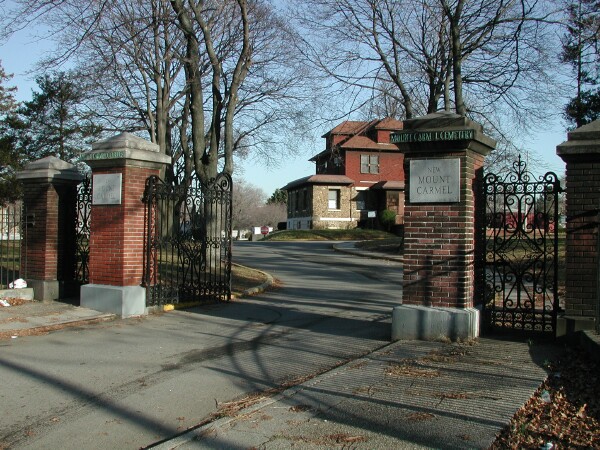
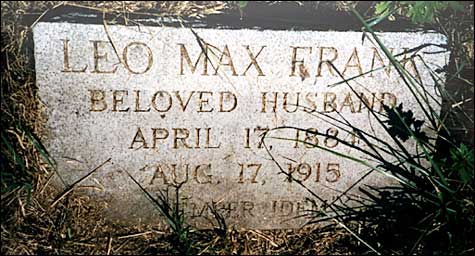
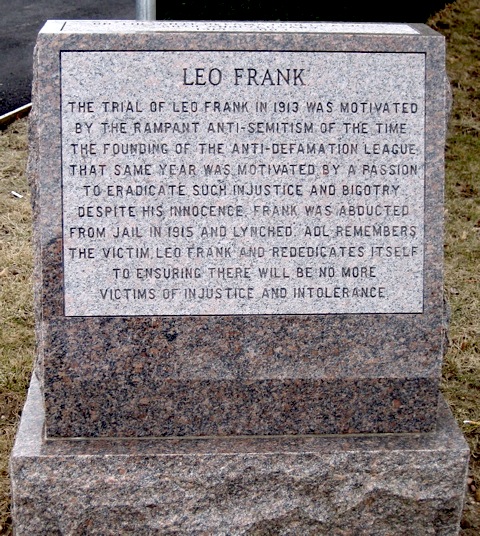
FRANK, LUCILLE (RESERVED FOR HER, but Empty) 1-E-41-1035-1 NONE 04/23/1957
FRANK, LEO 1-E-41-1035-2 NONE 08/17/1915
FRANK, RAY 1-E-41-1035-3 NONE 01/01/1925
FRANK, RUDOLPH 1-E-41-1035-4 NONE 01/15/1922
FRANK, MOSES 1-E-41-1035-5 NONE 10/24/1927
FRANK, SARAH 1-E-41-1035-6 NONE 08/01/1937
STERN, OTTO 1-E-41-1035-11 NONE 05/26/1963
STERN, MARIAN 1-E-41-1035-12 NONE 04/02/1948
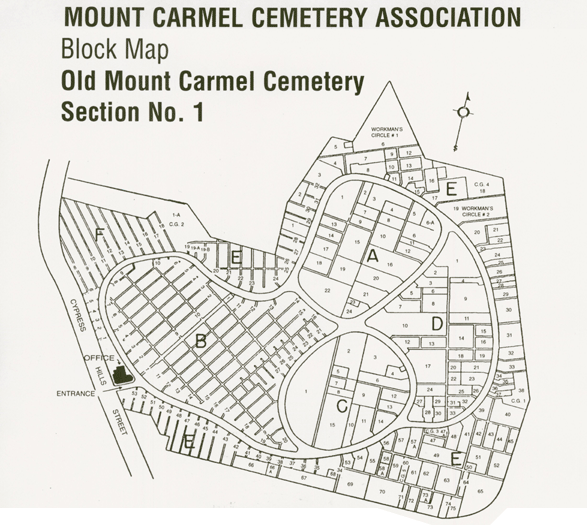
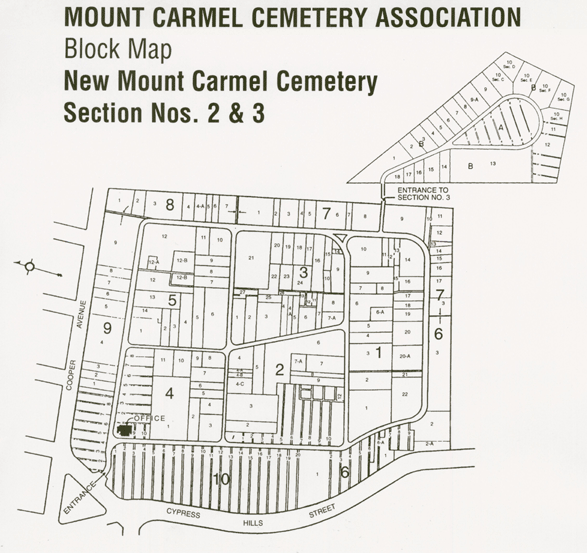
From the Bronx
Major Deegan Expressway-Triboro Bridge-Grand Central Parkway-Jackie Robinson Parkway-exit Cypress Hills Street (Exit #3) turn right at traffic light to first cemetery on right or Cross Bronx Expressway-Whitestone Bridge-Van Wyck Expressway towards Kennedy Airport-Jackie Robinson Parkway (Exit #7) exit Cypress Hills Street (Exit #3) turn right at traffic light. First cemetery on right.
From Brooklyn
Belt Parkway (East) to Exit #14 Pennsylvania Avenue-leads to Jackie Robinson Pkwy-Exit at Cypress Hills Street (Exit #3) turn left at traffic light. Proceed into right lane, entrance to cemetery is approximately 100 feet past intersection on right side of Cypress Hills Street. or Belt Parkway (East) exit Crossbay Boulevard North (exit #17N) leads to Woodhaven Boulevard-turn left onto Myrtle Avenue to 79th Street left onto Jackie Robinson Parkway going toward Brooklyn. Exit at Cypress Hills Street (exit #3). At traffic light make right turn onto Cypress Hills Street. First cemetery on the right.
From Long Island
Long Island Expressway (West) exit Woodhaven Boulevard-turn right onto Cooper Avenue. Follow Cooper Avenue to Cypress Hills Street. Bear left ¾ of the way around traffic circle (Drum Park). Cemetery is on left side of Cypress Hills Street before the intersection of Cypress Avenue.
or
Northern State Parkway (West)-Grand Central Parkway (West) to Exit #13 Jackie Robinson Parkway (Brooklyn) -Cypress Hills Street (Exit #3). Make right turn at traffic light, first cemetery on right.
or
From Valley Stream… North Conduit-Van Wyck Expressway-Atlantic Avenue-right turn at Crescent Street-leads to Jamaica Avenue-right turn at Cypress Hills Street, proceed up the hill. First cemetery on right after traffic light at Cypress Avenue.
From Westchester
See the Bronx
From Upstate New York
New York State Thruway (87) to Cross County Parkway (East)-Hutchinson River Parkway-Bronx Whitestone Bridge-Van Wyck Expressway (toward Kennedy Airport) to Exit #7 Jackie Robinson Parkway(Brooklyn). Exit at Cypress Hills Street (Exit #3) turn right at traffic light. First cemetery on the right.
From Connecticut
New England Thruway-Hutchinson River Parkway-Bronx Whitestone Bridge-Van Wyck Expressway (towards Kennedy Airport) to Exit #7, Jackie Robinson Parkway (Brooklyn)-Exit Cypress Hills Street (Exit #3) turn right at traffic light. First cemetery on the right.
From Manhattan
59th Street Bridge-Queens Boulevard-right turn at Woodhaven Boulevard-right turn onto Cooper Avenue-leads to Cypress Hills Street. Bear left ¾ of the way around traffic circle (Drum Park). Cemetery is on left side of Cypress Hills Street before the intersection of Cypress Avenue.
or
Queens Mid-town Tunnel-exit Woodhaven Boulevard-right turn onto Cooper Avenue. Follow Cooper Avenue to Cypress Hills Street. Bear left ¾ of the way around traffic circle (Drum Park). Cemetery is on left side of Cypress Hills Street before the intersection of Cypress Avenue.
or
Triboro Bridge-Grand Central Parkway (East)-Jackie Robinson Parkway (Brooklyn). Exit Cypress Hills Street (Exit #3) turn right at traffic light. First cemetery on the right.
or
From Downtown–Brooklyn Bridge to Brooklyn Queens Expressway (BQE) to Long Island Expressway (LIE). Exit at Woodhaven Boulevard. Right turn onto Myrtle Avenue. Myrtle Avenue to Cooper Avenue, make left onto Cooper Avenue to Cypress Hills Street. Bear left ¾ of the way around traffic circle (Drum Park). Cemetery is on left side of Cypress Hills Street before the intersection of Cypress Avenue.
New Jersey
George Washington Bridge-Major Deegan Expressway (South)-Triboro Bridge-Grand Central Parkway (East) Jackie Robinson Parkway (Brooklyn) exit Cypress Hills Street (Exit #3) right turn at traffic light. First cemetery on right.
or
George Washington Bridge-Cross Bronx Expressway to Whitestone Bridge. Whitestone Bridge to Van Wyck Expressway towards Kennedy airport to exit #7-Jackie Robinson Parkway. Jackie Robinson Parkway to Exit #3, Cypress Hills Street, turn right at traffic light. First cemetery on right.
or
New Jersey Turnpike to Exit 10 (Route 440) toward Perth Amboy, to Outerbridge Crossing to Staten Island Expressway, Verrazano Bridge to Belt Parkway (East) to Exit 14, Pennsylvania Avenue which will lead to Jackie Robinson Parkway (East). Exit Cypress Hills Street (Exit #3) bear left at traffic light onto Cypress Hills Street. First cemetery on right after the intersection.
Queens (From Queens Boulevard)
Woodhaven Boulevard-right turn onto Cooper Avenue. Follow Cooper Avenue to Cypress Hills Street. Bear left ¾ of the way around the traffic circle (Drum Park). Follow Cypress Hills Street up the hill. Cemetery on the left before the intersection at Cypress Avenue.
or
Woodhaven Boulevard-turn at Myrtle Avenue toward Ridgewood. Myrtle Avenue to Cooper Avenue-make left onto Cooper Avenue. Follow Cooper Avenue to traffic circle (Drum Park) follow traffic circle ¾ of the way around getting onto Cypress Hills Street. Cemetery is on the left hand side of Cypress Hills Street before the intersection of Cypress Avenue.
Staten Island
Verrazano Bridge-Belt Parkway (East) to Exit 14, Pennsylvania Avenue which leads to Jackie Robinson Parkway (East). Exit at Cypress Hills Street (Exit #3). Bear left at traffic light onto Cypress Hills Street. First Cemetery on right after intersection.
Airports
From Kennedy Airport
Belt Parkway (West)-exit Crossbay Boulevard-leads to Woodhaven Boulevard. Left turn at Jamaica Avenue-right turn at Cypress Hills Street and proceed up Cypress Hills Street. Cemetery on right side after traffic light at intersection of Cypress Hills Street and Cypress Avenue.
From LaGuardia Airport
Grand Central Parkway (East)-Jackie Robinson Parkway (West) Exit #3 Cypress Hills Street-right turn at traffic light. First cemetery on right.
Public Transportation from Manhattan
“A” Train to Euclid Avenue; Take B13 bus to Cypress Avenue/Cypress Hills Street intersection.
“J” Train to Cypress Hills Street; Take B13 bus to Cypress Avenue/Cypress Hills Street intersection.
“M” Train to Fresh Pond Road; Take B13 bus to Cypress Avenue/Cypress Hills Street intersection.
“F” Train to Delancey/Essex Street; transfer for “J” train to Cypress Hills Street; transfer to B13 bus, to Cypress Avenue/Cypress Hills Street intersection.
“L” Train to Wyckoff Avenue; Take B13 bus to Cypress Avenue/Cypress Hills Street intersection.
If you have a references you want added here, please contact us, we will include any references for the defense, neutral or prosecution.
Other References:
Some other references on the Leo Frank Case not mentioned here: http://www.jewishsouth.org/category/themes-and-subjects/leo-frank-case
Leo Frank’s 4th Separate and Distinct Murder Confession (make sure you are deeply acquainted with Leo Frank murder confession #3 before you can clearly understand Leo Frank murder confession #4), See: Atlanta Constitution, March 9, 1914: Leo Frank Answers List of Questions Bearing on Points Made Against Him
Mega Libraries!
Library of Congress Chronicling America “Leo Frank” newspaper search 1900 to 1922
The Tom E. Watson Digital Papers Archive (recommended) at the University of North Carolina at Chapel Hill: http://www.lib.unc.edu/dc/watson
Jeffersonian Newspapers specifically about the Leo Frank Case (1914 – 1917) and Mary Phagan (1913) @ LeoFrank.org: https://www.leofrank.org/library/jeffersonian-newspaper-pdf/
University of Georgia Library Archive: http://www.libs.uga.edu/
Critical Images: State’s Exhibit A, The 3D map of the factory
Critical Image: Defendants Exhibit 61, Ground Floor and Second Floor 2D Birds Eye View Maps of the National Pencil Company: https://www.leofrank.org/images/georgia-supreme-court-case-files/2/0125.jpg. Plat of the First and Second Floor of the National Pencil Company (Defendants Exhibit 61, Leo Frank Trial Brief of Evidence, 1913)
Tom Watson’s articulation of the Leo Frank murder confessions in the Jeffersonian Newspaper on Leo M. Frank 1914, 1915, 1916, & 1917 (80% Complete): https://www.leofrank.org/images/jeffersonian-newspaper-images/
State’s Exhibit B, Trial Brief of Evidence, Monday, April 28, 1913: https://www.leofrank.org/states-exhibit-b/. What time did Mary Phagan arrive in Leo Frank’s office?
Leo Frank’s Alleged Murder Confession #1 (incriminating statement) and the Testimony of Jim Conley (August 4, 1913): https://www.leofrank.org/jim-conley-august-4-5-6/. Jim Conley points to the bathroom region of State’s Exhibit A – the metal room – as the location he found Mary Phagan, before being asked by Leo Frank to move the cadaver to the basement.
Leo Frank Alleged Murder Confession #2 (incriminating statement), see Lucille Selig Frank and Minola McKnight (State’s Exhibit J, June 3rd, 1913). From The Leo Frank Case by Koenigsberg, “One of the most intriguing circumstances in the pre-trial development of this case involved a document signed by the black cook in the Frank/Selig household (Minola McKnight). Frank’s attorneys, would long argue that it was coerced by the police as a result of “third degree methods.” Since 1913, it has never been shown in its entirety, and we are glad to present it here. Also unmentioned in the last 9 decades is the sequence of events that led up to its appearance. Minola would make three affidavits in all (May 3rd, June 2nd & 3rd), but her over-night incarceration was specifically caused by her husband Albert’s statement made on May 26, and notarized on June 2nd (at the left). This description of events has never been cited, with only an oblique reference in the Samuelses’ Night Fell on Georgia (1956). The most striking sentence (and odd omission) is shown here for the first time: “Mrs. Frank had a quarrel with Mr. Frank the Saturday morning of the murder she asked Mr. Frank to kiss her good bye and she said he was saving his kisses for _______ and would not kiss her.” Readers may wish to consider its authenticity, as new light is shed on why Leo Frank “so thoughtfully” bought his wife a box of chocolates from Jacobs’ Pharmacy just before returning home at 6:30 pm on April 26th.” (LeoFrankCase.Com, Retrieved 2012).
Leo Frank Incriminating Statement #3: https://www.leofrank.org/confession/. On August 18, 1913, Leo Frank mounted the witness stand to give a four hour unsworn statement and he responded to Monteen Stover’s testimony about his office being empty between 12:05pm and 12:10pm, by saying:
Now, gentlemen, to the best of my recollection from the time the whistle blew
for twelve o’clock until after a quarter to one when I went up stairs and spoke
to Arthur White and Harry Denham, to the best of my recollection, I did not stir
out of my office; but it is possible that in order to answer a call of nature or
to urinate I may have gone to the toilet. Those are things that a man does
unconsciously and can not tell how many times nor when he does it. Now, sitting
in my office at my desk, it is impossible for me to see out into the outer hall
when the safe door is open, as it was that morning, and not only is it
impossible for me to see out, but it is impossible for people to see in and see
me there.
Leo Frank Incriminating Statement #4: Leo Frank Answers List of 17 Questions Bearing on Points Made Against Him, Atlanta Constitution, March 9th, 1914
If you want to ask one of the worlds foremost Leo M. Frank scholar questions about the Leo Max Frank case, contact Allen Koenigsberg. Post your public questions: http://groups.yahoo.com/group/LeoFrankCase/. The Leo Frank Case Library and Archive (www.LeoFrank.org) is not affiliated with Allen Koenigsberg and the Leo Frank Yahoo Discussion Group.
Study Leo Frank Murder Confession 1, 2, 3, 4. Is there a 5th out there? Yes there is, see if you can find it! Dive in! https://www.leofrank.org/images/jeffersonian-newspaper-images/
Fair use as described at 17 U.S.C. Section 107:
“Notwithstanding the provisions of section 106 and 106A, the fair use of a copyrighted work, including such use by reproduction in copies or phono-records or by any other means specified by that section, for purposes such as criticism, comment, news reporting, teaching (including multiple copies for classroom use), scholarship, or research, is not an infringement of copyright.
In determining whether the use made of a work in any particular case is a fair use the factors to be considered shall include:
# (1) the purpose and character of the use, including whether such use is of a commercial nature or is for or nonprofit educational purposes,
# (2) the nature of the copyrighted work,
# (3) the amount and substantiality of the portion used in relation to the copyrighted work as a whole, and
# (4) the effect of the use upon the potential market for or value of the copyrighted work.”
Last Updated: 2013